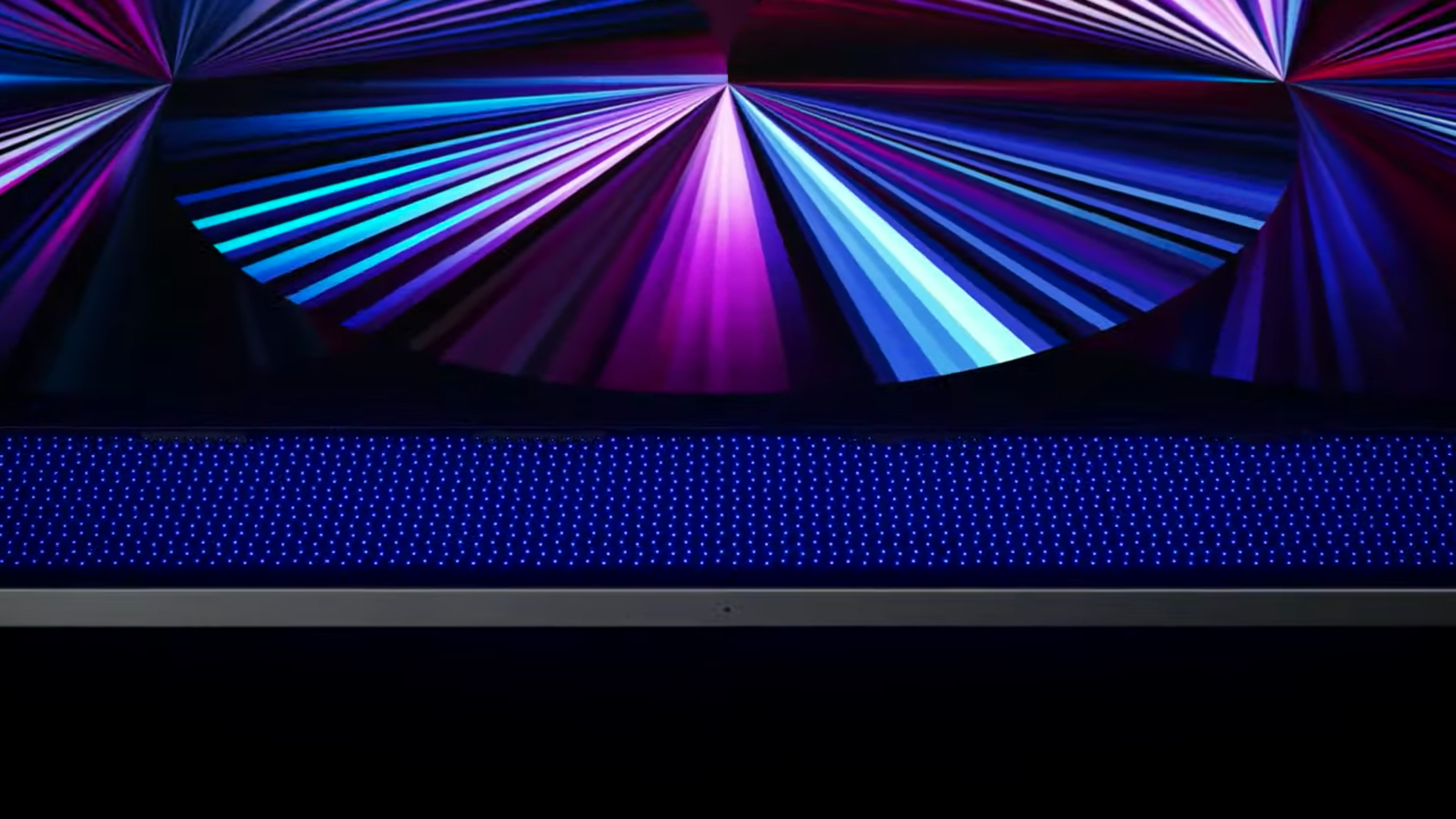

There's a tug of war happening in the tech world right now, hidden behind the scenes. It's between mini-LED – the fantastic new screen tech used in the new MacBook Pro (2021) 14-inch and 16-inch as well as the iPad Pro 12.9-inch (2021) – and next-gen OLED panels, and the fight is over your next laptop or iPad.
You may have already read the reports that Apple is planning to put a 'tandem' OLED panel in future iPads, but that it's had trouble getting the right supplier (and/or price). An OLED screen with a tandem structure should be less prone to burn-in than current OLED panels on phones and tablets, and would have a longer life – two things Apple is said to be demanding before it would switch to using OLED panels widely. But it's been tricky to make cost-efficient tandem panels – in the meantime, mini-LED already offers long life and no chance of burn-in, but still with precise HDR contrast that's close to OLED, so it makes sense that Apple would use it for now.
It made it seem like mini-LED might be the next big screen technology for all displays – we still expect it to become massively popular in the best TVs, but now it looks like it might be just a matter of time before tandem OLED does crash the party in laptop and tablet-sized screens.
That's according to a DSCC report (via OLED-info.com), which has analysed the expect cost of producing mini-LED screens at the quality Apple uses with tandem OLED screens using current factories and the new 8th-gen factories that are just getting started.

The short version of the analysis is that for 13-inch screens (such as we'd expect to see in the next MacBook Air, or future iPad Pros), and tandem OLED panel is likely to always be a little cheaper – and from 2023 when the new factories are involved, it should be significantly cheaper to produce. Given that Apple is said to be targeting 2023 for introducing the tandem OLED screen, that all fits.
DSCC says that this OLED cost advantage will apply to 16-inch screens as well, though only once the new factories are up and running, so again from 2023. However, it does note that that at the 27-inch (or larger) size that the new iMac is rumoured to be, mini-LED keeps a price advantage for the foreseeable future.
What does it all mean? Well, we've been talking about Apple only here, but Apple is usually a good weathervane for where more of the industry will go. OLED screens on laptops have always been few and far between, and with Apple introducing mini-LED, it felt like that would be the direction others will follow…
Get all the latest news, reviews, deals and buying guides on gorgeous tech, home and active products from the T3 experts
But if tandem OLED really solves the problems that make OLED an iffy choice for tablets and laptops, and if it really is up to 30% cheaper than mini-LED screens, then perhaps many manufacturers will be planning to skip straight to that, making mini-LED just a stop along the way.
Matt is T3's former AV and Smart Home Editor (UK), master of all things audiovisual, overseeing our TV, speakers and headphones coverage. He also covered smart home products and large appliances, as well as our toys and games articles. He's can explain both what Dolby Vision IQ is and why the Lego you're building doesn't fit together the way the instructions say, so is truly invaluable. Matt has worked for tech publications for over 10 years, in print and online, including running T3's print magazine and launching its most recent redesign. He's also contributed to a huge number of tech and gaming titles over the years. Say hello if you see him roaming the halls at CES, IFA or Toy Fair. Matt now works for our sister title TechRadar.
